In the last couple of years I’ve explored numerous abandoned buildings/haikyo, ranging from museums to mining towns, but for one reason or another, never any war-related sites — a situation I finally managed to rectify last week with a trip to Nagasaki and the Kawatana Japanese Navy Torpedo Boat Training School.
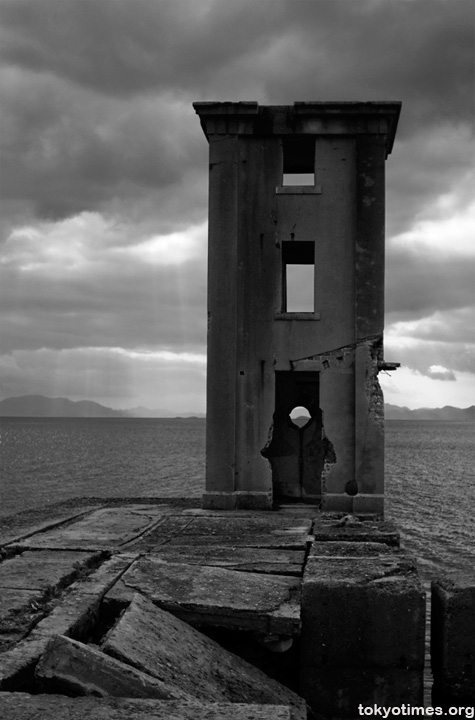
Many of those enlisted for the far more widely known of Japan’s special attack units, the Kamikaze, were taught at the relatively nearby Tachiarai Air Base, but at Kawatana, the less well known but no less deadly Shinyo (suicide boats) and Kaiten (explosives-laden submarines) personnel underwent their specialized training. Along with the even more desperate, although in the end little used, bomb carrying Fukuryu divers. All of it needless to say in preparation for the young conscripts one and only mission.
Now, however, after more than sixty years of standing untouched and exposed to the elements, the various lonely looking structures are slowly beginning to crumble.
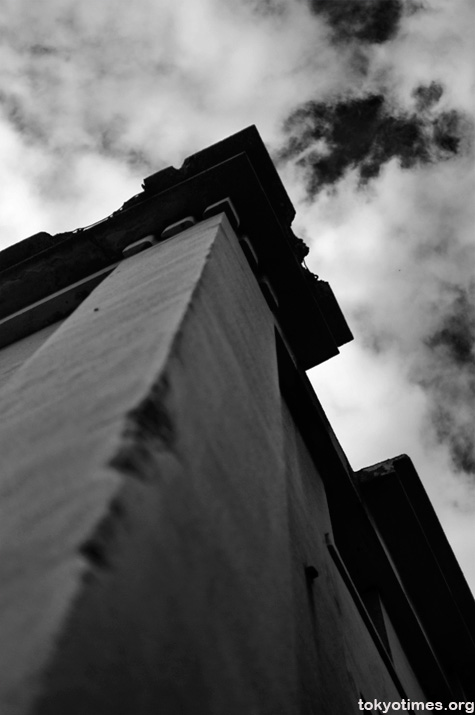
And despite the fact that the base would have been a very different place during the last couple of years of World War II, with thousands of men, many as young as 15, passing through in the process of making the ultimate sacrifice, nowadays there is only silence.
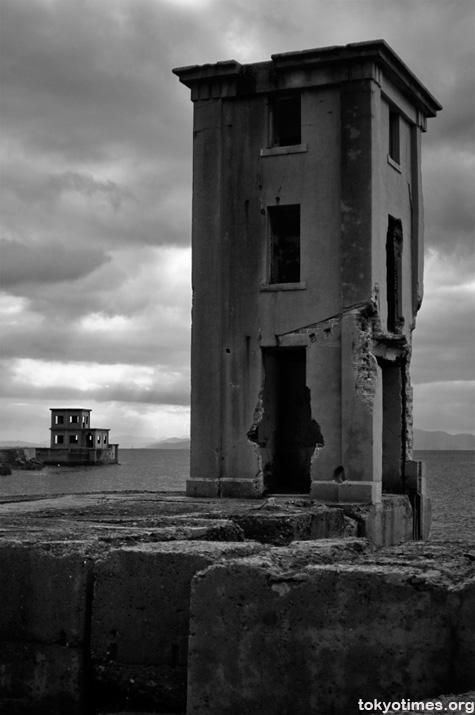
Plus, perhaps surprisingly, a certain sense of peacefulness.
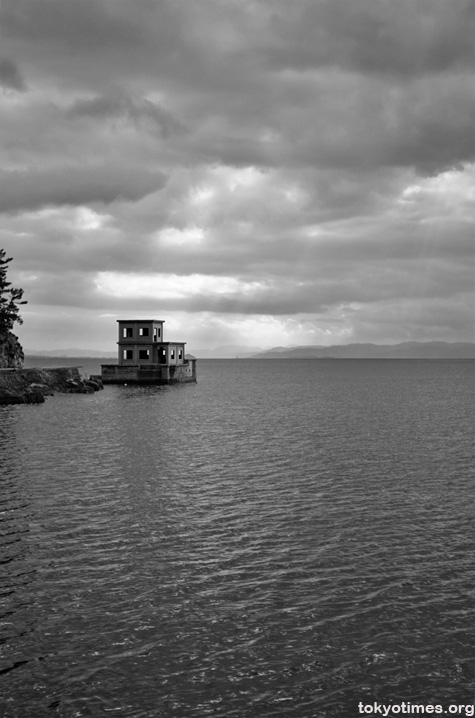
And added to this, the visit for me personally was especially poignant as I was taken there by a colleague whose father trained at Kawatana as a two-man suicide boat captain; a recruit who was luckily saved from performing his duty by Japan’s surrender after the devastation at nearby Nagasaki. A decision that, had it come a few weeks later, would have meant that his son wouldn’t have existed, and I’d have been standing there alone.
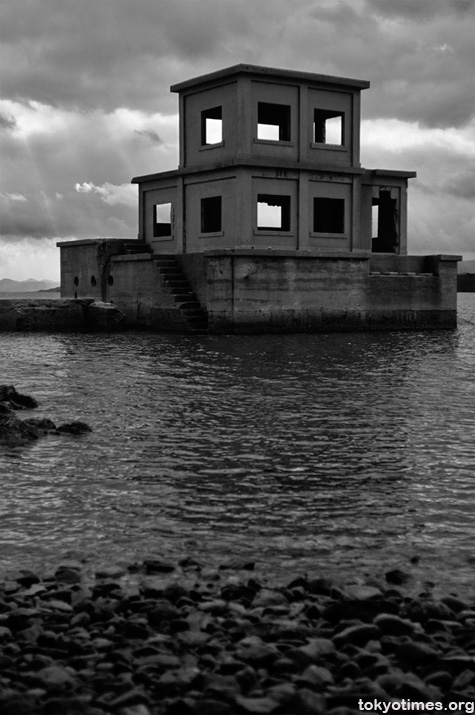
Just like the buildings do now, except for the occasional company of local fishermen.
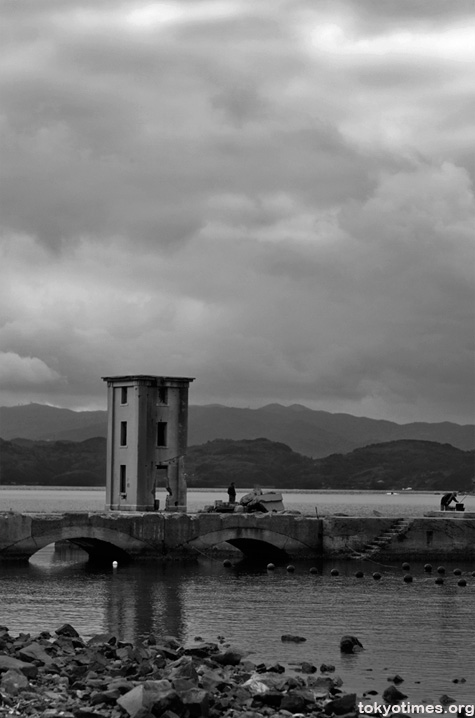
Jason Collin Photography says
Lee I like your different takes on what seems to be only two different subjects. The artistic approach definitely seems the way to go with such a haikyo, including the use of black & white.
Lee says
Thanks Jason. There were actually a couple more buildings tucked away in the trees, but they weren’t as photogenic and didn’t have the same sense of isolation.
To be honest it’s not the kind of haikyo I generally enjoy shooting, but it was a strangely beautiful place, and the challenge of taking a different approach was a lot of fun.
Mike says
Lovely article Lee, really made that much better by the background story behind it. Sounds like you had a good time out there with your friend 🙂
Lee says
Cheers Mike. Yeah, it was a very atmospheric place anyway, but being there with somebody who has a personal connection to the place, and who could also fill me in on all the historical details, made it an especially good place to visit.
MJG says
Awesome, loved the third shot down where we can see both the structures.
I’ll be heading to kyushu in a week or so, and would love to get this location from you.
Lee says
Thanks Mike. That’s probably my favourite too, although the first one came out a lot better than I expected.
It took us about an hour or so on the train from Nagasaki. I’ll work out where it is on the map and I’ll mail you the details.
Rob says
Another great shoot Lee.
The fact that these buildings were used to train for suicide missions makes the photos even more haunting.
Lee says
Cheers Rob.
I totally agree. Generally I prefer haikyo that are full of bits and pieces left behind by the people who once lived or worked there, but despite being just crumbling buildings, theses were really fascinating. And at the same time incredibly sad. Especially so after seeing pictures of some of the youngsters sent out from the nearby air base I mentioned in the post.
Matt says
Great set of photos. B & W suits them so well and adds to the atmosphere your story a brings. Must have been quite a haunting place to visit especially having such a connection to it with your friend there.
Lee says
Thanks! Yeah, despite there being just a few empty buildings, it was very atmospheric place. And having somebody there with a personal connection really added to it.
S_in_shanghai says
Excellent Lee. The whole series of photographs displays a certain mood. No 3 is my personal favorite as it is very well framed. I really got to enjoy your pics a lot lately.
I was thinking about if there are any statistics showing how big percentage of the men going through this training actually went on a mission?
It was very nice of your colleague to join you on this trip!
/S
Lee says
Thank you! That’s my favourite too. Really happy with the way it turned out. I think it’s probably the nearest I’ve ever come to capturing the feeling of a place.
Not sure if there are any statistics available, but I’ll try and find out. I’d guess that the percentage was very high though, as from what I’ve heard, once training was completed, the men were sent off to various island and bases, and from there quickly sent out to perform their duty. Their training was just to do that one specific job, nothing else, so conceivably the only ones who survived were the those who hadn’t (or had just) completed their training when the war ended.
S in Shanghai says
Hm, I remember to have seen a few missions that were hits, but a lot failed. It was mostly the pilots. If so many went on a mission, a lot of them must have failed.
/S
Lee says
No idea what the percentage of ‘successful’ missions was, but likewise I’d guess the vast majority of them failed to hit their target.
From what I’ve been told, the boats went out at night to give them more of a chance, although presumably they would still have been heard. The subs on the other hand would seem to have had the best chance, although again, I have no data to prove it either way.
BNR says
Great photos and article Lee !
Lee says
Thanks BNR. Glad you liked it.
blur says
Any chance you’ll be posting picture kawatana202.jpg in color?
It looks amazing… 🙂
Lee says
I made the decision before I went there to do the shots in black and white, and the looks and history of the place seem to really suit it, so sorry, but there’ll be no colour edition.
blur says
Ah. Ok. Please, no apologies…
Was just wondering how it would look like in color.
Still, excellent shot! 🙂
The Envoy says
The images do look haunting….befitting its past.
Florian says
Shooting the place in b/w is pure genius! I wish I’d known about this article before I went there myself…
It seems like the training centre is quite popular with the people living there and among haikyoists, but hardly anything is known about it on the internet. I hope some student of Japanese Studies will pick up the topic and writes a bachelor’s thesis or something like that about it.
Lee says
I’d seen pictures before I went and made the decision then to do them in black and white. As well as being more atmospheric, it somehow seemed more befitting. The cloudy skies helped too.